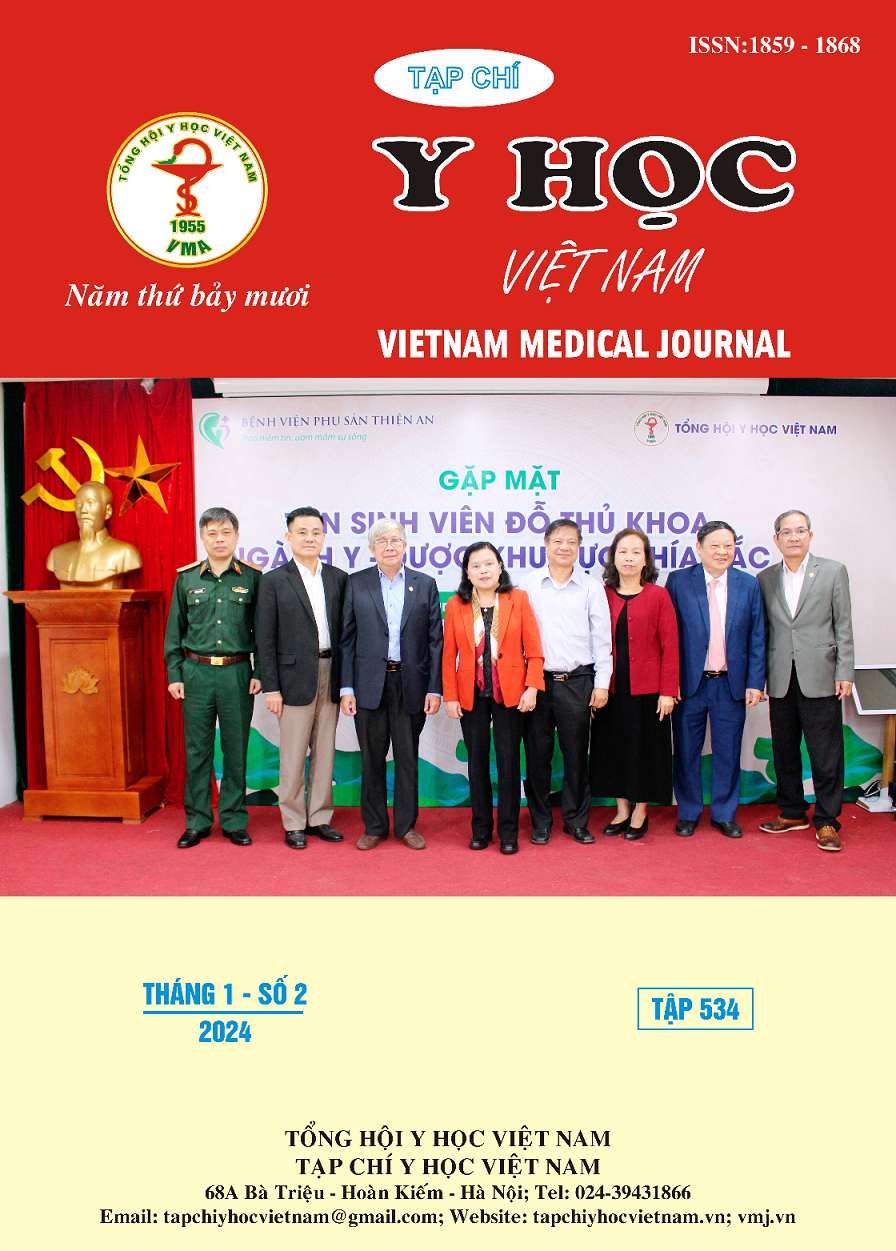MEASUREMENT OF TALAR MORPHOLOGY IN VIETNAMESE POPULATION
Main Article Content
Abstract
Background: Ankle replacement surgery, which has been performed since the 1970s, is now considered a promising option for improving pain and range of motion in severely damaged ankle joints. However, post-operative complications remain high, with a resurgery rate ranging from 5 to 20%. Increasing the anatomical compatibility of talar bones in prosthesis design is believed to reduce complications. This requires a clear understanding of the morphological features of the talar bones. Objective: To determine the morphological characteristics of the talus bone using computed tomography scans. Methods: This study describes a series of cases involving the survey of 100 talar bones from 2-legged computed tomography scans of 50 Vietnamese individuals over 18 years old at the Department of Diagnostic Imaging of University Hospital of Medicine and Pharmacy Ho Chi Minh City. The talar bones were rendered in a 3D plane using Mimics Software System 21.0, and 8 bone indicators were measured. The t-test was used to compare normal distribution quantitative variables, and the Mann-Whitney test was employed for non-standard distributions using STATA 14.0 statistical software. Results: The study had average age of 55.12 years old, with a male-to-female ratio of 1:1. All the indexes exhibited a normal distribution. The length of medial malleolus articular surface (LMMAS) was 32.81 mm. The breadth of medial malleolus articular surface (BMMAS) was 10.62 mm. The length of lateral malleolus articular surface (LLMAS) was 30.63 mm. Breadth of lateral malleolus articular surface (BLMAS) was 9.45 mm. Anterior breadth of trochlea (ABT) has an average value of average was 27.22 mm. Middle breadth of trochlea (MBT) was 22.39 mm. Posterior breadth of trochlea (PBT) was 16,79 mm. And trochlea tali inclination angle (TaIa) was 14.17o. Conclusions: These data can be valuable in selecting prosthesis designs suitable for the Vietnamese population, preoperative planning and application in ankle surgery related to the talus.
Article Details
References
2. Angthong C, Rajbhandari P, Veljkovic A, Piyaphanee A, Stufkens SAS, Wibowo R. Morphometric geometric differences between right and left human tali: A cadaveric study of fluctuating asymmetry via systematic measurement and three-dimensional scanning. PloS one. 2020;15(4):e0232012.
3. Zhang Y, Chen Z, Zhao D, Yu J, Ma X, Jin Z. Anatomic ankle implant can provide better tibiotalar joint kinematics and loading. Medical Engineering & Physics. 2022/05/01/ 2022;103: 103789.doi:https://doi.org/10.1016/j.medengphy.2022.103789
4. Sugimoto K, Takakura Y, Tohno Y, Kumai T, Kawate K, Kadono K. Cartilage thickness of the talar dome. Arthroscopy: the journal of arthroscopic & related surgery: official publication of the Arthroscopy Association of North America and the International Arthroscopy Association. Apr 2005;21(4):401-4.
5. Trovato A, El-Rich M, Adeeb S, Dhillon S, Jomha N. Geometric analysis of the talus and development of a generic talar prosthetic. Foot and Ankle Surgery. 2017/06/01/ 2017;23(2):89-94.


